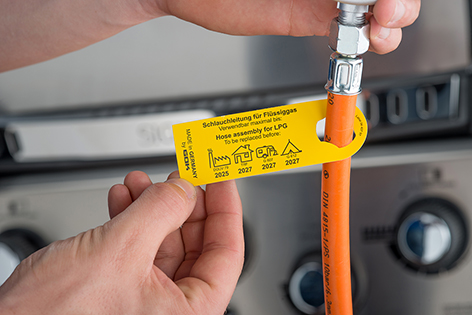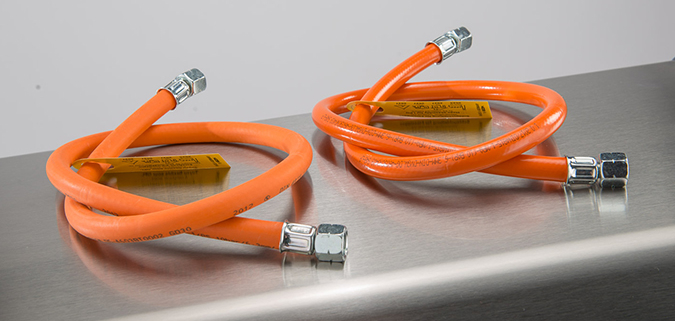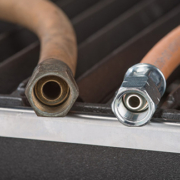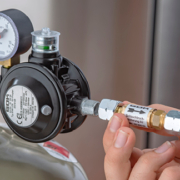What does the marking on the gok gas hose mean?
The orange gas hose from GOK has a few details printed on the material – some of which will certainly be obscure to users. This is why we have decided to show you in this article which data is printed on the hose assemblies and which is not.
The GOK hose assemblies for the gases propane and butane and their mixtures are extremely versatile. For example, they can connect the pressure regulator with the gas barbecue, the gas anti-tilt device with the heating mushroom or the excess flow device with the heater.
Standard for labeling
On the hose material itself, you will find the exact data for the gas hose in blue or black text. DIN EN 16436-1, which replaced DIN 4815-1, stipulates what must go where. Below is a graphic which shows the labelling (click to enlarge the graphic):
what do all the things on the gas hose mean?
Perhaps one or two of the terms aren’t familiar to you. We’ll explain the individual points of the standard-compliant marking once more in detail:
- Manufacturer’s mark – This is an abbreviation of the manufacturer, in this example, it’s GOK.
- DIN EN 16436-1 – Right after that, the applicable standard for the requirements of the gas hose is printed.
- class 2 – The standard stipulates different product classifications. On GOK hose assemblies you will either find the label “class 2” or “class 3”. These two categories only differ in terms of their highest permitted working pressure (class 2 = 10 bar; class 3 = 30 bar).
- 6.3 mm – This measurement is the inside diameter of the hose assembly
- 10 bar – The gas hose is suitable for pressure up to this number.
- Propane/butane – Not difficult to work out: You may only use the hose assembly in connection with the gases propane and butane (in other words: liquefied gas or LPG).
- -30 °C – The hose can be used above this minimum ambient temperature.
- PROD DATE 2017: – This is the year in which the hose assembly was produced. The majority of our hose assemblies also have a yellow tag. This tag tells you the year in which you have to replace your hose assembly, at the latest.
- DVGW XX-XXXXXXXXXX – The German Technical and Scientific Association for Gas and Water assigns an approval number for the hose assemblies which is printed on each one.
- ABCD – finally, you will find the batch number for the hose assembly, for example, to guarantee traceability of production series.

For whatever purpose you use your hose assembly for, on the yellow tag you will find information about the year in which you need to replace it with a new one.
No part number?!
As you may have noticed, the GOK part number is not part of the labelling on the gas hose. This has relatively practical reasons. We buy the hose material on a reel and we don’t know which part of hose will fit which part number.
We have numerous different varieties of hose assemblies. This makes it impossible to print the part number on the raw material during the labelling process.





